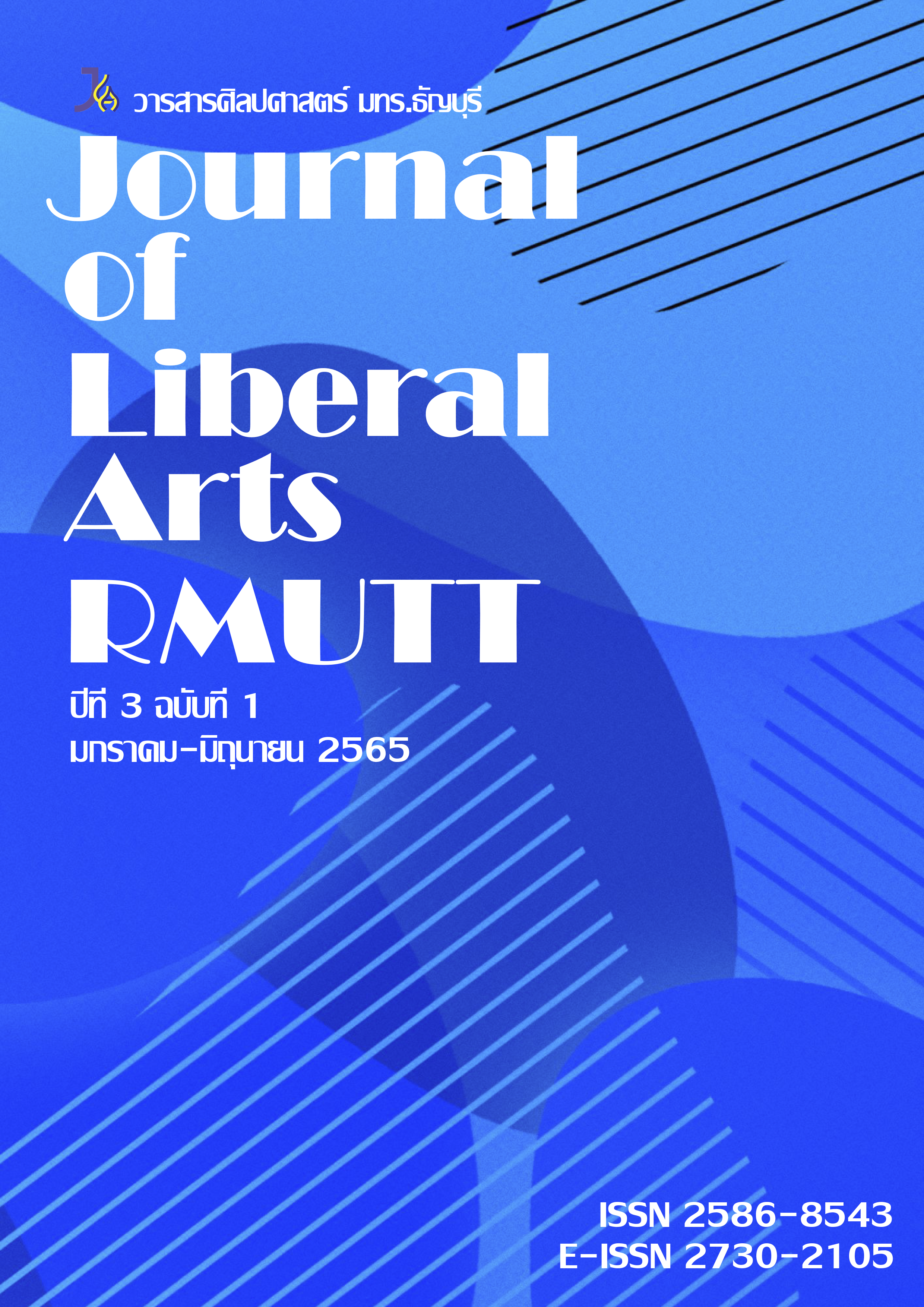‘I use active learning, but my class is not always active’ Secondary School English Teachers’ Perceptions of Active Learning
Keywords:
perceptions, implementation, active learningAbstract
Abstract
Active learning is highly appreciated as effective learning and it has been encouraged worldwide. This study aims at investigating secondary school English teachers’ perception and implementation of active learning in their situations. The participants were 10 secondary school English teachers in the northeast of Thailand who reported in the online survey that they were familiar with active learning and were willing to participate in the study. They were interviewed for in-depth information about active learning in their point of views and their practice. The interview results were analyzed for themes. Salient cases were also reported and discussed. The findings revealed both similarities and differences in the participants’ personal interpretation of what active learning is and is not. Most of them viewed that active learning covered both physical and cognitive aspects of learning suggesting that active learning is not always observable. Most of them also expressed concern that their classes were not always active. The teachers’ perceptions and implementation of active learning implied complex and multifaced aspects of active learning that required more careful attention in both teacher education and teachers’ professional community.
Keywords: perceptions / implementation / active learning
References
Allen, D.E., & Tanner, K.D. (2003). Learning in context: problem-based learning. Cell Biol. Educ., 2, 73–81.
Allsop, J., Young, S. J., Nelson, E. J., Piatt, J., & Knapp, D. (2020). Examining the Benefits Associated with
Implementing an Active Learning Classroom among Undergraduate Students. International
Journal of Teaching and Learning in Higher Education, 32 (3), 418-426.
Bonwell, C.C., & Eison,J. A. (1991). Active learning: Creating excitement in the classroom. ASHE-Eric
Higher Education Report No. 1. Washington, DC.: George Washington University.
Bonwell, C., & Sutherland, T. E. (1996). The active learning continuum: Choosing activities to engage
students in the classroom. New Directions for Teaching and Learning, 1996(67), 3-16.
Carson, R. N. (1995). Active Learning. Montana: Montana State University.
Crews T. B., Ducate L., Rathel J. M., Heid K., & Bishoff S. T. (2011). Clickers in the classroom: Transforming
students into active learners. Retrieved on Jan 31, 2022, from https://its.unl.edu/pdfs/
Educause%20SRS%20success.pdf
Drew, V., & Mackie, L. (2011). Extending the constructs of active learning: Implications for teachers’ pedagogy and practice. Curric. J. 22, 451–467.
Fern, V., Anstrom, K., & Silox, B. (1993). Active Learning and the Limited English Proficient Student.
Bethesda MD: National Clearing House for Bilingual Education.
Leu, E., & Price-Rom, A. (2006). Quality of education and teacher learning: A review of the literature.
McKinney, K. (2007). Enhancing learning through the scholarship of teaching and learning: The
Challenges and the joys of juggling. San Francisco: CA: Anker.
Nata, N. & Tungsirivat, K. (2017). Active learning for language skills development. International (Humanities,
Social Sciences and Arts), 10(5), 506-515.
the Office of the Basic Education Commission. (2020). OBEC Policy of 2020. Retrieved on November 24,
, from http://www.bopp.go.th/?cat=25#
Page, M. (1990). Active learning: Historical and contemporary perspectives. Amherst, MA: University of
Massachusetts.
Petersen, C. I. & Gorman, K. S. (2014). Strategies to Address Common Challenges When Teaching in an
Active Learning Classroom. New Directions for Teaching and Learning, 137, 63-70.
Prince, M.J., & Felder, R.M. (2006). Inductive teaching and learning methods: Definitions, comparisons, and
research bases. J. Eng. Educ. 95, 123–138.
Rimm-Kaufman, S., Baroody, A., Larsen, R., Curby, T., & Abry, T. (2015). To What Extent Do Teacher-Student
Interaction Quality and Student Gender Contribute to Fifth Graders' Engagement in Mathematics
Learning?. Journal of Educational Psychology, 107, 170-185.
Scheyvens, A., Amy, L., & Griffin, B. (2008). Experimenting with active learning in geography: Dispelling the
myths that perpetuate resistance. Journal Geography in Higher Education, 32(1), 51-69.
Trowler, V. (2010). Students Engagement Literature Review. York: The Higher Education Academy.
Wimpenny, K. & Savin-Baden, M. (2013). Alienation, agency and authenticity: A synthesis of the literature
on student engagement. Teaching in Higher Education. 18(10), 1080.
Youpensuk, N. & Laiprasertporn, N. (2018). The usage of P.I.L. active learning model on body organ system
of grade 6 science class of demonstration school. In The 2020 International Academic Multidiscipline Research Conference in Lucerne, pp. 142-149. Bangkok: Suan Sunandha Rajabhat University, Thailand.
Yuusuk, S. (2020). An Implementation of Active Learning in Thai University Students’ English Language
Classroom. Journal of Liberal Arts, Maejo University, 9 (1), 112-135.
Downloads
Published
How to Cite
Issue
Section
License
Copyright (c) 2022 Journal of Liberal Arts RMUTT

This work is licensed under a Creative Commons Attribution-NonCommercial-NoDerivatives 4.0 International License.









